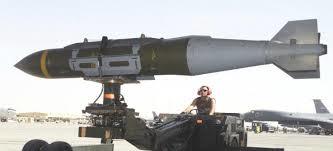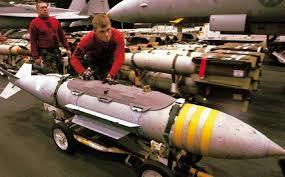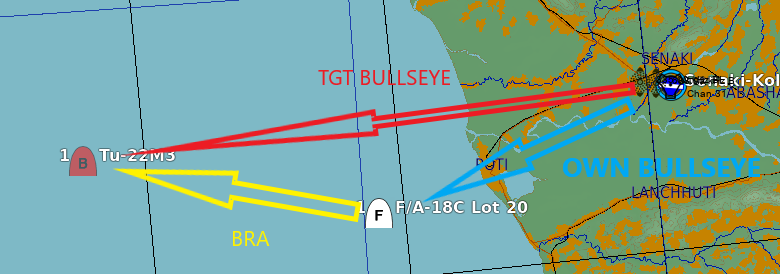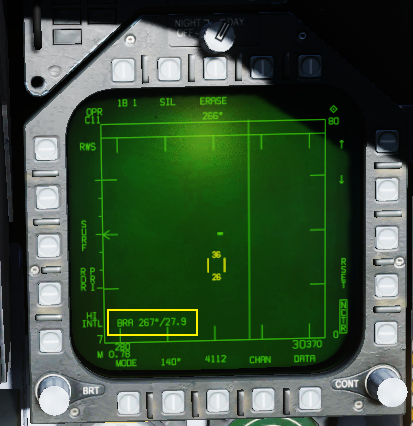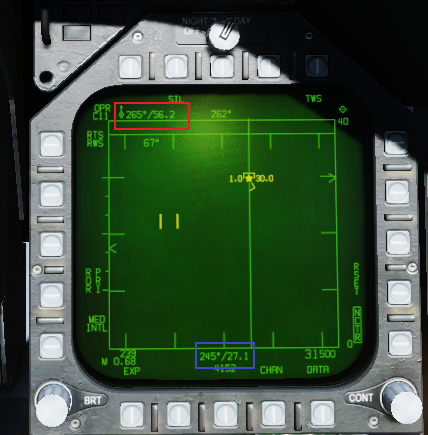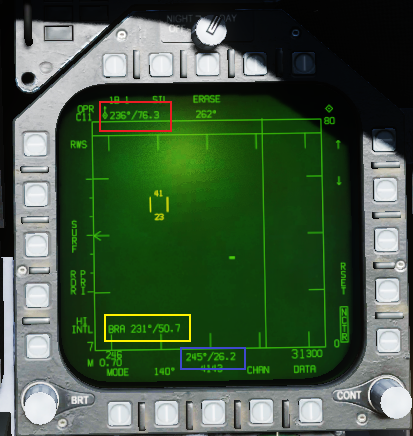

KlarSnow
Members-
Posts
561 -
Joined
-
Last visited
-
Days Won
4
Content Type
Profiles
Forums
Events
Everything posted by KlarSnow
-
No he's talking about shooting in TWS-A, as you are supposed to for an ARH AIM-54 at range. If you shoot in PD-STT you will have a SARH missile that will NEVER go active if you snip it. If you shoot in TWS-A, wait until you see the target track start blinking, that is your missile activation cue, and you no longer need to support it. If you turn around prior to the blinking target track, your missile will also NEVER go active. If you have Target size set to medium, that happens at ~16 seconds to go. If you tell jester/your RIO to set target size large it happens at ~23 seconds to go. If you shoot in TWS-A and crank, the missile will go active ~roughly~ 2/3rds-3/4ths the distance you fired it from. So if you shoot at 40NM, you should be able to turn around by 25-30 miles with an active missile, leaving the target 25-30 miles behind you, and any R27ER that they have fired completely defeated. This is what the Phoenix appears to do when fired in BVR modes with a lock. the ACM cover or boresight button switch it into ACM modes which are rather unclearly documented. Essentially expect it to be active off the rail and probably fly straight ahead down the Armament Datum Line until it sees something, it "might" get cued by a lock in PD or P-STT or the TCS when in an ACM mode, but that is not documented well in the heatblur manual or anywhere else. 1. TWS-A: Phoenix flies via a "quasi" SARH/DL mode until it is commanded active by the AWG-9 based on the target size switch in the RIO pit. Once it goes active it no longer requires or can receive any support from the AWG-9. 2. TWS-M: as soon as you pull the trigger the radar switches to TWS-A, see above for how that works. 3. PD-STT: A phoenix launched in PD-STT flies like a giant Sparrow, SARH only, will never go active, and must be supported with a good PD-STT lock throughout its entire time of flight. 4. P-STT: Missile is given cueing to the target and is launched with its seeker active, no support or guidance from the AWG-9 is possible once it has launched, and it flies in a straight line along the angles passed by the AWG-9 when you pulled the trigger until the onboard radar finds something.
-
Got mine on monday, the detent setup in software was not intuitive, until I found this post VPC Detent setup Key thing that took a bit of kajiggering was that the right throttle axes is inverted (raw values decrease instead of increase) so when setting the detents I had to invert the values, took a bit of trial and error to figure it out later I can post what it looks like in my setup as an example, but just be ready for that. Once thats setup the afterburner detent works great. The afterburner detent is a push thru btw, its just a hard push through, tighten that bolt down pretty hard cause it will move if you slam the throttle forward over it. Or just put it all the way forward. If you set the AB detent up as he describes LOW-HIGH detent in the post linked, you will have to use a deadzone/curve in DCS to make the idle detent work. However the axis to button still works if you do that. Overall a bit more tinkering than I was hoping to get it setup the way I wanted it. Biggest stopping block was figuring out the virpil software detent stuff, hopefully that post will help a ton. Made zero sense what was happening till I read that. After that its kinda the standard DCS curve/deadzone tweaking that you always have to do.
-
There are many rotaries, knobs, and dials that need to be turned in DCS. While it is awesome that we have to click and manipulate every single one, it is also painful that the mouse cursor is always stabilized to our viewport, which becomes more important when we are using a headtracking device, or VR. Suggestion/Solution 1) a sticky cursor option in the controls. Let the cursor stick to the nearest hotspot in the cockpit, and stay stuck to it as long as it is within the field of view of the viewport, unless we move the mouse enough to "break" the stick. Yes this is very similar to the current BMS funtionality, but it would be an awesome option to have in DCS. 2) The ability to "lock" and then "unlock" the cursor to a rotary/dial/switch regardless of our viewport orientation. Idea behind this is there may be some rotaries on side panels that we want to rotate, but dont necessarily need or want to be looking at beyond locating it to get the cursor on. Idea here is use middle mouse click to "lock" the cursor to the selected control, and then left/right click, or middle mouse scroll would then be "locked" to that particular control, no matter what the viewport has in its vision, similar to the left/right click and hold functionality we have now, but a deliberate option. Reclicking the Middle mouse button would then "unlock" the cursor, and re show it in the viewport (wherever the player is looking) 3) for players with rotary encoders or potentiometer knobs, the ability through HOTAS or the middle mouse click to "lock"/"Unlock" the rotary to a knob. Think you have one "universal" rotary encoder or knob, and when you middle mouse click a knob in the cockpit, that control is then activated by that knob, would allow a single knob or rotary to function for multiple controls in an easily rememberable and usable fashion. Could also see this being very useful in VR, having only one knob needed in the same repeateable position, all you have to do is select the control using the mouse/pointer, then twist the one knob/rotary.
- 1 reply
-
- 1
-

-
You still have to hit the UFCD IFF and then power the system on, anything you do after that will have zero effect in game. Doesn't matter what you have colonized or what code is in what window, if the system is on its still the same side based IFF return to everybody else it was previously, and your interrogator works as it did previously as well, plus the auto IFF settings on the Az/El page.
-
The missile has the same terminal kinematics at 60 miles as it has at 30 miles, It fully flies out its loft, and will go terminal with mach 2 plus in most cases. If you need more than that you are talking having it intercept while the motor is still burning, so short range shots. The only advantage firing it closer gives you is a shorter fly out. The Aim-54A/C kinematically is plenty capable of engaging fighter or otherwise sized targets in DCS out to 60-70 miles, you just have to support it successfully. If the target turns cold on the longer ranged shots, it all depends on what range he turns around, in most cases if you are high fast and shoot at long range, if he turns around at the missiles activation, it is impossible to outrun the missile. If he turns around prior to the missiles activation, different story, and that missile is probably defeated, but not necessarily. All of this is just talking about pure kinematic ability to reach the target with enough energy to successfully complete the engagement. Chaff/Notching will always be something the target can do, either at 30 miles or 60 miles to completely defeat your missile, and there is nothing you can do about that other than hope the chaff dice rolls don't go good, and hope his notch is either late or ineffective. That applies to every missile in DCS right now in varying degrees.
-
I cant speak for other aircraft, but in the strike eagle we would just load em up as steerpoints, there wasnt a separate way of loading preplanned targets in their own "target point" thing. There was a way to load preplanned sets of targets for JDAM's in particular, but that didnt provide "steering" or affect the flightplan. But we almost never used it, because it was cumbersome. much simpler to just drop the lat longs into a steerpoint, and then transfer it into the bomb that way. Other jets probly have their own methods or techniques, but really whatever works is a valid technique. Sometimes there were two-three different ways of doing this stuff, and everybody had their own preference. If it was just a few targets, or we didnt have time to boot up the mission planning computer and reload the mission files, we would just take the coordinates on a sheet of paper and hand jam them. If we had time, we would load them all in to a second flight plan (if it was more than a couple of targets) and then use that flight plan to target things. Or if somebody was feeling adventurous maybe we try and use the preplanned JDAM thing, but since nobody ever used it, and it wasnt as "flexible" as the other methods, that usually required some studying up on how it worked prior, and some digging around the mission planning software to figure out how to load it.
-
I dunno anything about A-10 specifics, but in general to make "realistic" flightplans you have to decide is your mission going to simulate a training mission (red flag, flying out of a base just to go to a range, not actual combat, etc...) or an actual combat mission. A training mission is probly going to have much more involved/defined admin phases of flight. Think following a specific departure procedure like out of vegas, flying to an entry/exit point for the airspace you are getting to, and adhering to specific altitudes and restrictions. Combat missions are generally much much more flexible. The departure procedure is usually something like, "make a right hand turn direct to the departure point, climb and maintain X altitude". The RTB is also usually pretty straightforward. There will be a smattering of named points in each AOR that will be familiar that you may use when crossing borders or marshalling. Those will generally not change day to day, and would be the same in an AOR the entire time you are there. The other side of it is that all this point control and procedure flying is usually IFR, if your mission is VFR, especially with A-10's or Helo's, its pretty standard to takeoff and hit a visual departure point and then just navigate visually at a VFR altitude to and from the airfield and/or the overhead. Not A-10 Specific, but when we flew to the Range at RAF Lakenheath in the strike eagle your flightplan might just be like 3 points. the 2 targets you were planning on hitting at the range, which because of how IFR worked in the UK, you just took off and asked for direct the range, then got told proceed direct, so you flew straight there, checked in with the ranger, did your stuff, then the last point would be the IAF for the ILS. You would have presaved points for the 3 visual entry points to the overhead if you didn't want to come up initial for whatever reason. But that was just normal cause you flew out there all the time. Oh we are going to charlie to downwind, load up steerpoint 210 thats steering to charlie... etc. In the Flying in the states your departure is just a turnout to a point about 10-15 miles away from the field, and then usually a point or two in a straight line to whatever airspace you are going to. Once in the airspace its whatever your mission is, and then after that its usually just a point or two to get you as directly back to the field as you can. Same stuff about if theres a particular overhead or initial point, you would just hand load a presaved listpoint, instead of having it be a part of the "flightplan". and you can always navigate to tacan fixes or cancel and fly VFR to and from places as well. In combat it was usually just turn out to the exit point, and then as assigned. Again we didnt usually have super defined flightplans cause you could get sent anywhere, just like 500 preplanned points ready to go, and the ability to quickly throw out a rough grid for a killbox they assigned us to into a markpoint. if you are doing a super specific CAS op in an A-10, then you might have a slew of IP's and ingress/egress points that are specific to that particular mission or area. Again things that probly dont change too much in a day to day op, but only as the operation evolves. If you are on call or doing more old school low level stuff, get to an IP and then do some visual flying. The A-10 is primarily a VFR jet especially in the areas that it excels in. And that means use waypoints and the flightplan as a reference, but also dont be afraid to get where you are going just by navigating off the map visually if you have to.
-

So what are the differences between all the GBU-31 we have now ?
KlarSnow replied to secretcode's topic in DCS: F/A-18C
GBU-31v1 GBU-31v2 GBU-31v3 GBU-31v4 There are 2 different versions of the BLU-109 penetrator bomb body, I think thats what you are seeing in the difference of the v3 and v4 up there, the one with the flared out rear end, and the one without. The angle on the v4 is not great so I cant tell which one it is. In effect still the same bomb. and would still be annotated as a v3 or v4. Some quick googling will usually serve you well with this kinda stuff btw http://www.designation-systems.net/dusrm/app5/jdam.html -

So what are the differences between all the GBU-31 we have now ?
KlarSnow replied to secretcode's topic in DCS: F/A-18C
V1 is a Mk 84 bomb body, V2 is a Mk-84 bomb body, but with the grey navy thermal coating to keep it from cooking off on a ship in case of a fire V3 is a BLU-109 penetrator V4 is a BLU-109 penetrator, but with the grey navy thermal coating to keep it from cooking off on a ship in case of a fire The grey naval thermal coating textures are not currently implemented in game. So in effect there is no difference in game right now between a V1/V2 or a V3/V4 other than the name. -
That is only a two seat thing, that cross only shows up in a two seat hornet and represents the other seats helmet. There is no need to show you where you are pointing your own face...
-

AIM-54 Changes / new API fixes are live in today's patch
KlarSnow replied to IronMike's topic in DCS: F-14A & B
https://en.wikipedia.org/wiki/Side_lobe -
So if you TUC (Target under Cursor) something there is a TUC in the priority list, if there is room in the priorities it will promote whatever you have TUC'd to wherever you have it set in the priority. Has a little asterisk next to it in the helmet. I havent played too much with it but it appears to only be working off the SA display, using the STEP function on the SA display counts as the same.
-
Blanks the member / closest friendly or not when you look inside the cockpit
-

Why it's hard limited to 6G when speed higher than Mach 0.85?
KlarSnow replied to Kumabit's topic in JF-17 Thunder
The reason aircraft have a lower G limit in the transonic region (.9-1.1 Mach) Is due to the center of pressure on the wing shifting. As the aircraft starts to enter and then punch through the shockwave, the center of pressure shifts on the wing. Usually shifting aft, This means that the "load bearing structure" of the wing, the main spar usually, is no longer colocated with the center of pressure. Basically think all of the aircrafts weight is no longer being supported by the main spar which is designed to support the full G capability of the aircraft. After the transonic region the Center of Pressure stabilizes and is no longer moving, and the aircraft can resume its normal G limits. Wings arent solid structures, they are mostly empty space with specific strengthened parts, the G limit goes down so you aren't trying to pull 8 times the aircrafts weight supported by just the thin metal of the skin of the aircraft. Below corner airspeed AOA is always the limiting factor in how much you can pull, above corner airspeed (Transonic or supersonic is generally always above corner) G is the limiting factor, you are going fast enough supersonic that you can generate the maximum G of the aircraft with very little AOA. -
And EA-18G EWO as of right now, and have flown with JHMCS in the Growler (which works exactly the same as the hornet/superhornet), it works and looks exactly like it does in DCS in how it prioritizes and displays contacts. Dont really care if you believe me or not, just trying to help you not start a spurious bug report or "does it really work like this train" It does, work with it, don't try and make it do something its not designed to do, will save you a lotta effort.
-
So if you have Others at the top of the priority list, it only gives them 3 slots, even if there are no friendlies around. If its at the bottom of the list it gets all 7 if there is nothing else to show. Intent behind this is to prevent you from overriding the priorities so hard that you don't see your wingmen/allies and their fighter to fighter stuff. So if you want to see the most off board data, leave it down at the bottom, and have no friendlies around. You'll have to experiment with the range settings, its not something you really customize or screw with much if at all IRL, its just there and shows you what it shows.
-
Maybe ED will put all the specific details to this system in the manual whenever they update it. Unfortunately there is no source that I'm aware of on this that is out in the wild to link you too. Just trying to pass that what they have done is accurate, and does work like the real thing does so rather than fighting it to try and get it to do what you want, or think it should do, maybe just work with it as is, it's pretty accurate.
-

AIM-54 Changes / new API fixes are live in today's patch
KlarSnow replied to IronMike's topic in DCS: F-14A & B
Think he means in game tracks, not tacviews, tacviews dont help them troubleshoot that much, it's mostly derived data, not in game system truth data. -
The real thing, wheres your source that it doesn't work like I said?
-
That is by design, real thing prioritizes Members and Donors over Others rather heavily. Even if you move Member and Donors to the bottom of the list and others to the top it will still only give Others 3 slots total to play with and saves 4 for friendlies even if there are none there. Ironically if Others is at the bottom it has all 7 slots available if there is nothing else in the link for it to look at. It is that way to prevent exactly what you are trying to do from happening. IE friendly tracks are the priority and you cant really work around it except by changing the ranges it shows stuff.
-
See pictures below should hopefully straighten it out for you. [ATTACH=JSON]{"data-align":"none","data-attachmentid":"7125251","data-size":"full"}[/ATTACH] If you do not have a Bullseye (A/A Waypoint) selected on the HSI>Data sublevel: You will only get cursor BRA from you in the middle left of the display when you do not have a Launch and Steer (LnS, track with a star in it) Designated. As soon as you designate an LnS track, in any mode, that BRA readout goes away. [ATTACH=JSON]{"data-align":"none","data-attachmentid":"7125252","data-size":"full"}[/ATTACH] If you do have a Bullseye (A/A Waypoint) selected on the HSI>Data sublevel: In addition to the cursor BRA, will also get the Cursor Bullseye readout in the upper left without an LnS Selected, and ownship bullseye in the lower center. [ATTACH=JSON]{"data-align":"none","data-attachmentid":"7125254","data-size":"full"}[/ATTACH] As soon as you Designate an LnS in any mode (LTWS, TWS, STT, or RWS) the upper left Bullseye readout is now only LnS bullseye, and the BRA readout as before goes away. [ATTACH=JSON]{"data-align":"none","data-attachmentid":"7125253","data-size":"full"}[/ATTACH] Ownship bullseye will remain regardless of LnS designation.
-
So played around with these a bit more, and...they sorta work. It looks like if you move the uplook cursor outside of the 9X field of regard (more than 90 deg HOBS) the 9X seeker detaches from the uplook and just floats around offset. This would explain it not tracking because its pretty easy to put the uplook past 90 degrees from the nose. However you can kentucky windage it if you play around, and it will work. When it is not detached from the uplook, it appears to mostly work as intended. However, the 9X doesnt seem to track when you have the crosshair on a target, but if you put one of the 4 outer points of the crosshair on the target, it seems to reliably start to track. So basically its really finicky to use cause to get a solid tone you kinda have to find the kentucky windage sweet spot where it will hold, as you pull the trigger. However there is a pretty useful technique you can do that is far more reliable. Command Uplook, then command Uncage. The seeker is now slaved to the uplook, but as soon as it detects anything it immediately tracks on its own and decommands uplook. So you know when it has found something because the AIM-9X immediately starts tracking and the uplook crosshair goes away instantly. Can actually reliably get some quick HOBS shots off with it that way.
-
I tested/found out about this the other day, it appears that while everything looks to be working, the Aim-9X seeker will never change tone if you put the uplook reticle over something. So even tho it appears to be slewing appropriately (based on the AIM-9X LOS circle in the hud following the uplook around instead of the helmet cross), it isnt useable. The other issue is that the real things blink when you exceed the AIM-9X field of regard, IE are looking past where the 9X can point, it doesnt do that in DCS. Keep in mind the location of the uplook cursors is so far up and to the side that if you are flying in VR you will probably never see it, since you have a 1-1 FOV in VR, real thing shows up at around your eyebrow which is gonna be outside the FOV of most if not all VR headsets. Note just how far up and to the left it is in this image (slightly zoomed out from default FOV)
-
IRL, this version of JHMCS and these types of NVG's, yup, cant have both at the same time.
-
K take a look at these. These are the cleanest examples of the disparity I can find in my tacviews Hornet AIM-7MH Loft ON HOrnet AIM-7MH Loft OFF The first two are hornets with AIM-7MH's, first Loft on shooting at ~20 miles, greater than 50% hit, accounting for dragging bandits, more than 75% hit. This is how Sparrows were before they got borked across the board around the supercarrier release. We found that bug which still appears to be present in the tomcat sparrows, reported it to ED and they fixed it. It is still present but only on the tomcat as exemplified by the Tomcat tacview below. Tomcat AIM-7MH Miss Note they are shot at 12 miles, both bandits while maneuvering continue hot and don't do anything more violent than what the hornets targets did, the bandit in the west just does a lazy 2G roll while pointing straight at the missile, and both sparrows which should have the bandits dead to rights barrel roll around targets endgame. That's the issue. This is what we reported to ED ~4 months ago and got fixed for all sparrows, and it is still present for tomcat AIM-7MH's.

